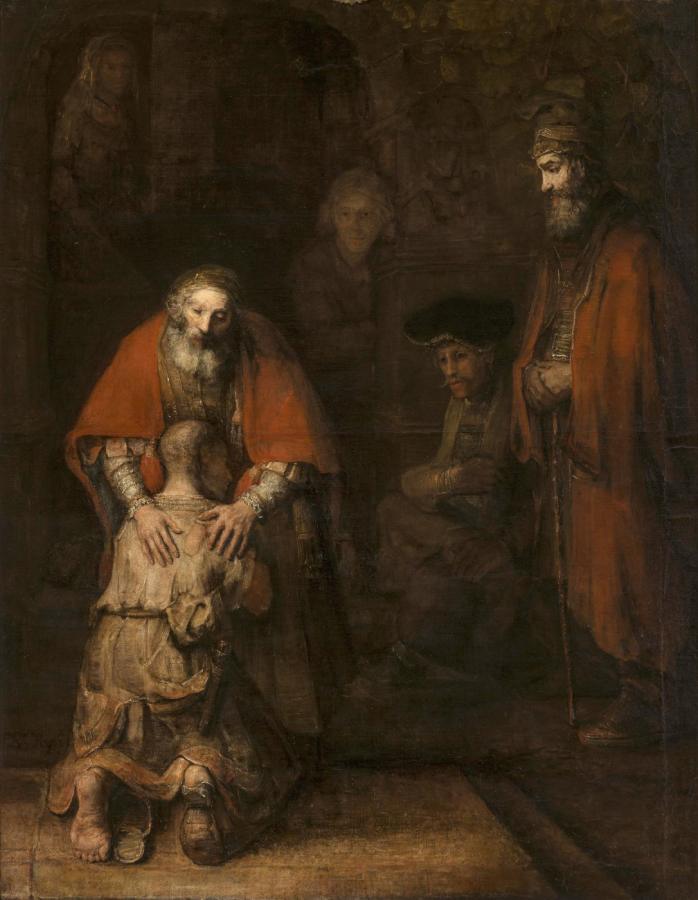Rembrandt (1606-1669)
Return of the Prodigal Son
c.1668
Oil on canvas, 262 x 205 cm
Hermitage Museum, Saint Petersburg
At one moment in his youth Rembrandt depicted himself in one of his many self-portraits as a reveller and spoilt child of fortune at the height of his fame and his powers, with a goblet in his hand and his beloved woman in his lap. His turning to the subject of the return of the prodigal son (Lk 15:11-32) is a sort of finale to that story. The artist painted the work just months before his death. It is hard to recognize the pale, emaciated, shattered man returning to the father whom he left in his youth as that same reckless pleasure-seeker, gambler and spendthrift, who asked his parent for his share of the inheritance and squandered it away down to the last coin. What has become of his self-confidence and fine clothing? Everything impermanent has slipped from him like an empty husk. At the cost of suffering and losses he has gained insight. Entering his father’s house, miserable, sick and exhausted, he falls on his knees before his parent, who bends over him, full of love and forgiveness. In the smoky twilight of the space the old man’s face shines like a star in the night sky: the light of consolation descends on the son. The red wrap over the old man’s shoulders forms a sort of canopy above the unhappy wanderer. The astonished witnesses look on in silence. In Holland, a Protestant country where there were no painted altarpieces in the churches and large pictures on religious subjects were rarely painted, Rembrandt produced without any commission a huge painting in which the peculiarities of the artist’s mature manner, colour and light themselves, acquired a spiritual character. It is as if he was drawing the balance of his life and his artistic career, placing himself before the judgement of Higher Mercy and of the world. (SHM)
